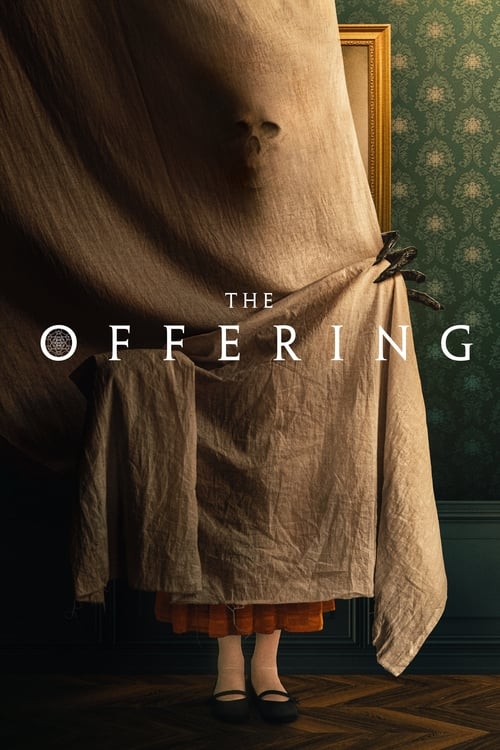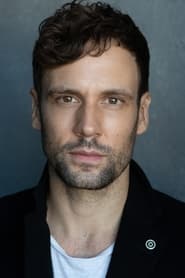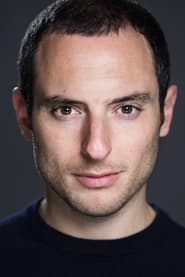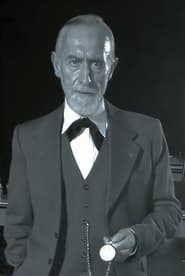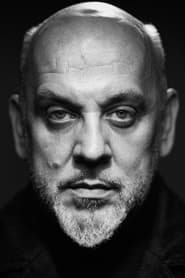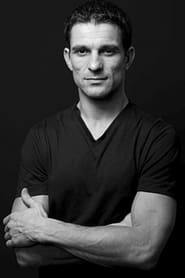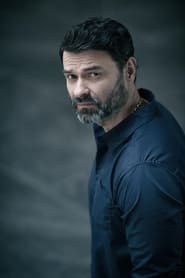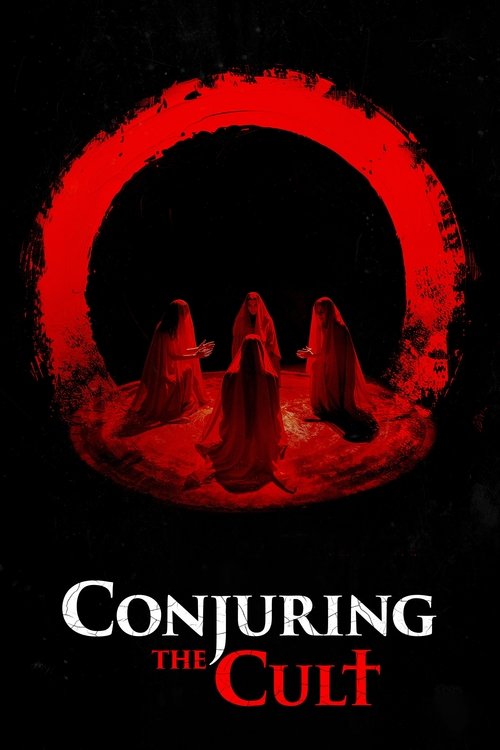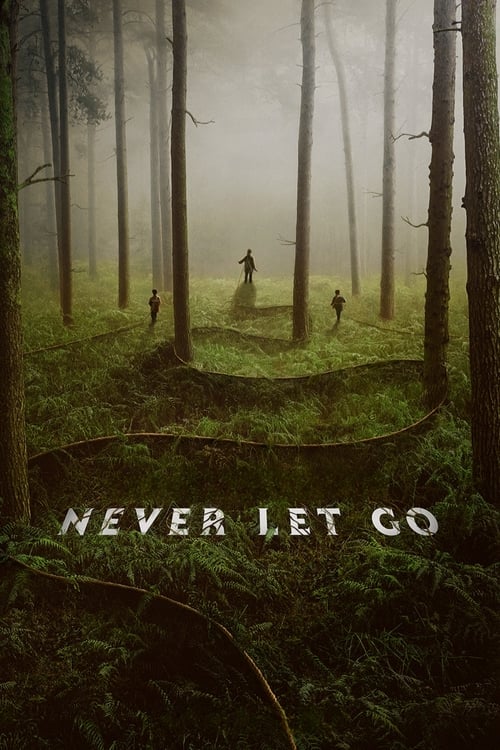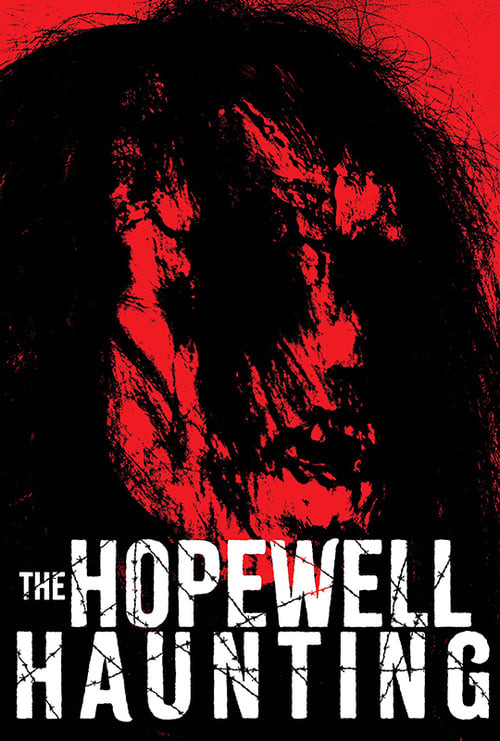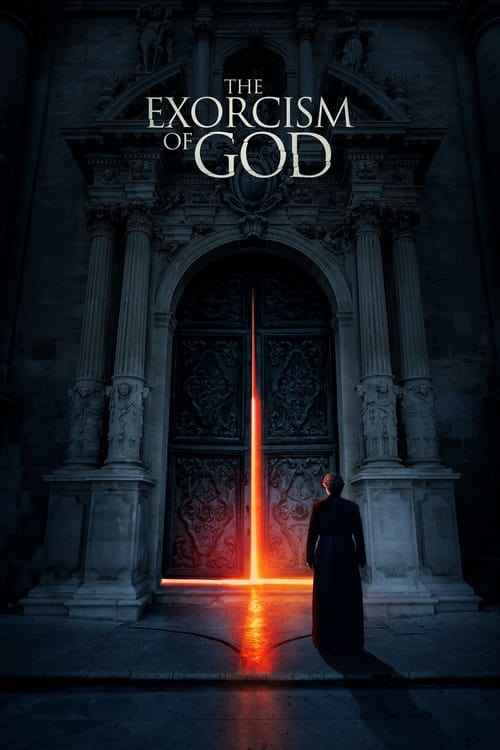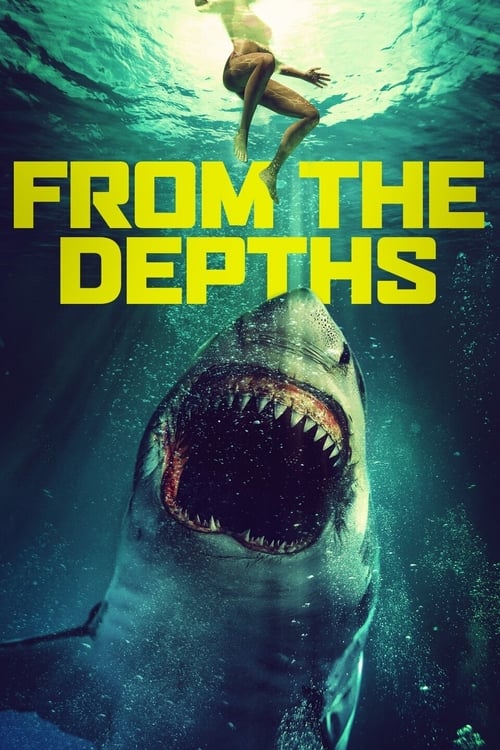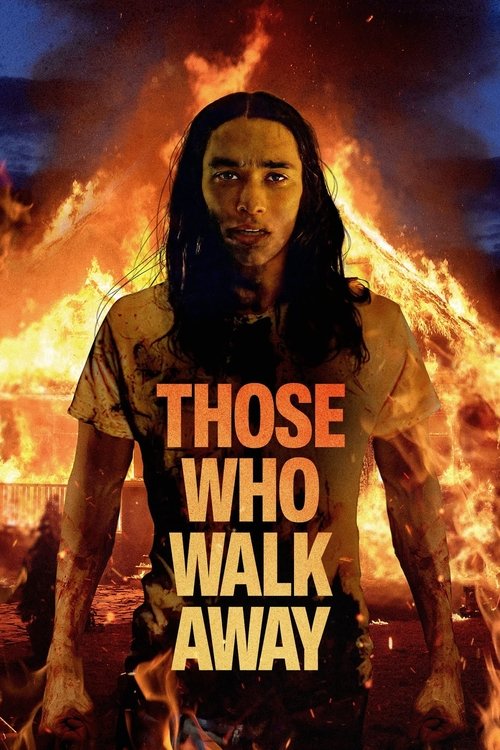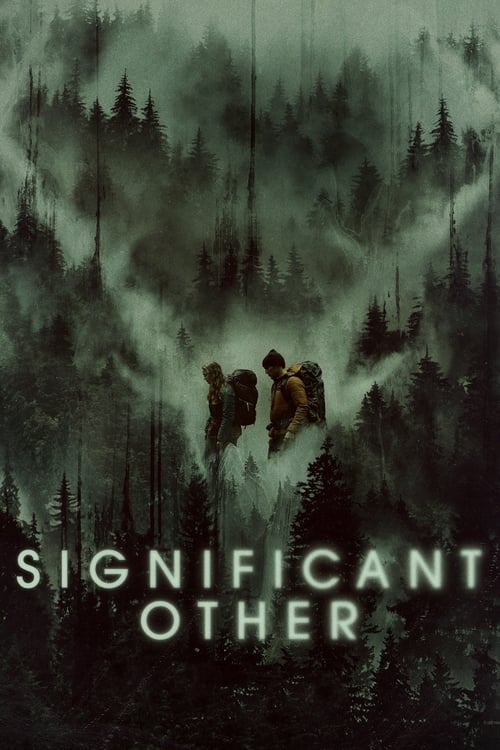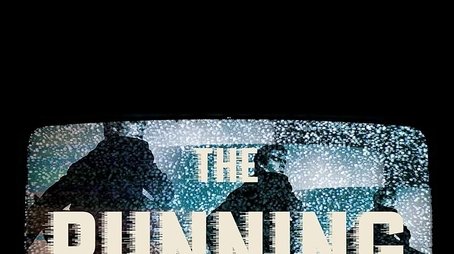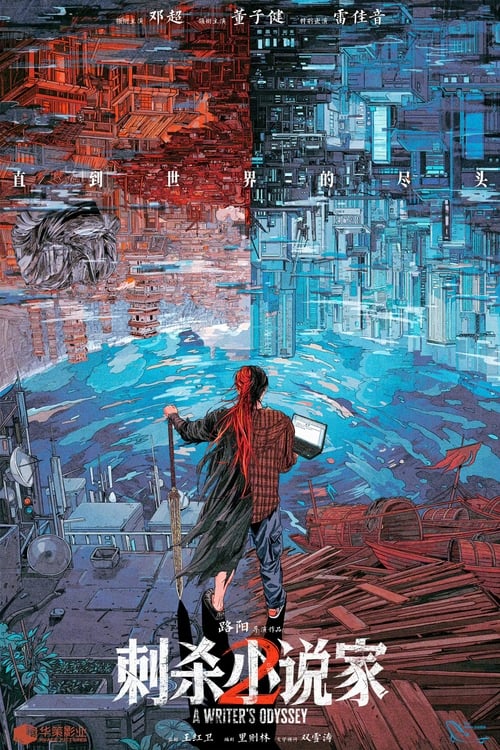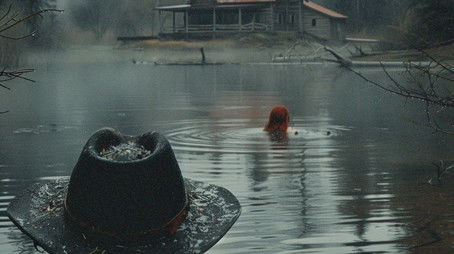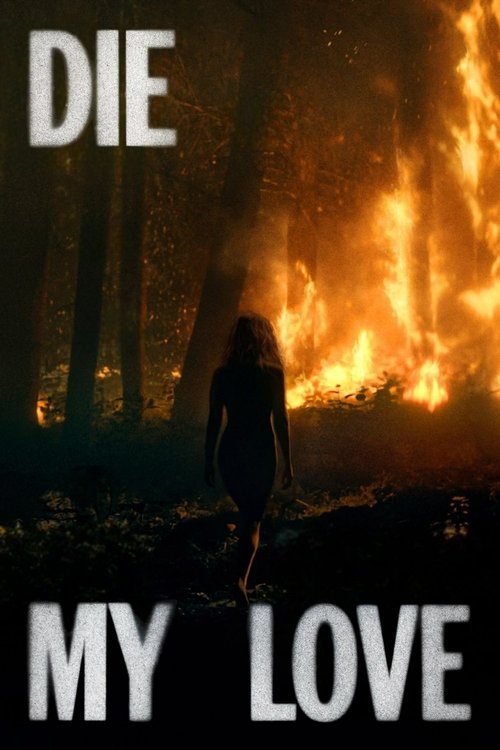
Ask Your Own Question
What is the plot?
The Offering (2022) is a horror-thriller steeped in Jewish folklore, set in the heart of Brooklyn's Hasidic community. The story unfolds over a tense, fateful weekend in late October, as the boundaries between family, faith, and the supernatural blur into a nightmare.
Prologue: The Ritual
On a cold, moonlit night in a cramped Brooklyn apartment, Yossle, an elderly man with haunted eyes, prepares for a desperate act. He slaughters a chicken, its blood spattering the floor, and hurriedly spreads ash in a trembling circle. His wife, frail and pale, appears at the door, her voice weak but urgent: "Stop, Yossle. Please, stop." He barely glances at her, his voice a rasp. "Burn in hell," he mutters, turning back to his ancient, leather-bound book. As he reads, the letters begin to bleed, dripping crimson onto the pages. A child's whisper echoes through the room: "Yossle… do you want to see your wife again?" He shakes his head, his jaw set. "No." Stepping outside the circle, he swallows a thick, black smoke that coils from the book. His eyes darken, the whites turning pitch black. With a final, shuddering breath, he draws a knife from his back pocket and plunges it into his own chest, collapsing onto the floor. The amulet around his neck glows faintly, but the ritual is incomplete--the demon is not fully bound.
Arrival: Family Secrets
Days later, Arthur "Art" Blumberg (Nick Blood), a real estate agent with a failing business, arrives at his father's home in Brooklyn with his pregnant wife, Claire (Emily Wiseman). Art is the estranged son of Saul Blumberg (Allan Corduner), a respected Hasidic funeral director whose basement doubles as a funeral home. Art's marriage to Claire, a non-Jewish British food journalist, has deepened the rift between father and son, but Saul is visibly moved by their visit, eager to reconnect. He welcomes them warmly, though his longtime assistant, Heimish (Paul Kaye), watches Art with suspicion, sensing ulterior motives.
That evening, over a tense Shabbat dinner, Saul asks, "What brings you back after all this time, Art?" Art hesitates, then lies: "We just wanted to see you, Dad. Claire's due soon. We thought it was time." But Claire catches the flicker of guilt in Art's eyes. Later, alone in their room, she confronts him. "There's more to this, isn't there?" Art finally admits, "I need Dad to mortgage the house. My business is drowning." Claire's face hardens. "You brought me here to help you lie to your father?" Art looks away, ashamed.
The Body in the Morgue
The next morning, Saul receives a call--a neighbor, Yossle, has committed suicide. Art volunteers to help prepare the body, hoping to earn his father's trust. In the dimly lit morgue, the air thick with the scent of embalming fluid, Art and Heimish begin the tahara, the ritual washing. As Art lifts Yossle's body, the amulet slips from the corpse's neck, clattering down a drain. Unseen, a shadow uncoils from the drain, slithering into the corners of the room.
Later, Saul examines the knife found with Yossle, its hilt carved with strange symbols. He calls Reb Chayim, a local rabbi, who explains, "This knife, with an amulet, is used for a binding spell. But without the amulet…" His voice trails off ominously. Saul's unease grows.
Meanwhile, Heimish, suspicious of Art's sudden return, snoops through his phone and discovers the truth about Art's financial troubles. At dinner, Heimish confronts Art in front of Saul and Claire: "He's here for your house, Saul. He wants you to sign it over." The room falls silent. Saul's face crumples. "Is this true?" Art, cornered, finally breaks down: "After Mom died, you weren't there. I lost everything--my faith, my way. I needed you, Dad." Saul's eyes fill with tears, but before he can respond, the lights flicker. A cold draft snakes through the room.
The Demon Awakens
That night, Claire is awakened by whispers. She follows the sound to the bathroom, where the faucet runs red. A child's face appears in the mirror--Sarah Scheindel, a missing girl from the community. Claire gasps, but the vision vanishes. She rushes back to bed, shaken.
Downstairs, Saul, unable to sleep, returns to the morgue. The shadows seem to move on their own. Suddenly, the corpse of Yossle sits up, its eyes black voids. Saul stumbles back as an unseen force slams him against the wall, his breath choked from his lungs. The demon, now free, takes Saul's life in a violent, silent struggle. The next morning, Art finds his father's body surrounded by praying men. Heimish, grief-stricken, accuses Art: "He died of a broken heart. Because of you." He thrusts a paper into Art's hands--the mortgage document, already signed by Saul.
Visions and Descent
At Saul's funeral, the community gathers in mourning. Art and Claire both experience disturbing visions--Claire sees Sarah Scheindel beckoning from the crowd, while Art sleepwalks, his hand moving of its own accord to draw a strange sigil on the floor. He wakes up confused, convinced it was a dream, but the mark remains.
That afternoon, Art and Heimish collect another body--Sarah Scheindel, found dead in a nearby alley. As they prepare her, Heimish's suspicion turns to fear. "Something is wrong here, Art. These deaths… they're connected." Art, desperate for answers, searches the morgue and finds a hidden videotape. He plays it, and Yossle's face fills the screen. The old man speaks directly to the camera: "I tried to bind her, the child stealer, Abyzou. She takes the young, the unborn. I failed. She is free. Save the child." The tape ends abruptly.
The Truth Revealed
Art rushes to Claire, who is pale and sweating. "It's coming for the baby," he says, voice trembling. Claire clutches her belly, feeling a cold presence. The house itself seems to breathe, walls creaking, shadows lengthening. The demon, Abyzou, is among them, her hunger focused on Claire's unborn child.
Heimish, now an ally, brings ancient texts. "We need to perform the binding ritual again. But we need the amulet." Art remembers it fell down the drain. They rush to the basement, but the drain is sealed--by blood and black tendrils. The demon is guarding it.
The Final Confrontation
That night, the house becomes a battleground. Objects fly, doors slam, and the temperature plummets. Claire is seized by contractions--the baby is coming, and Abyzou is coming for it. Art and Heimish barricade themselves in the morgue, surrounded by candles and prayers. "We have to lure her here," Heimish says. "She wants the child, but she's bound to the amulet. If we can trap her again…"
Art, desperate, cuts his palm and smears his blood on the floor, drawing the sigil he saw in his vision. He recites the incantation from Yossle's book, his voice rising above the howling wind. The demon materializes--a shifting, shadowy figure with the face of a grieving mother, then a monstrous hag. She lunges for Claire, but Art stands between them. "You won't take another child," he snarls.
Abyzou's form wavers, drawn to the sigil. She screams, a sound that shakes the house, as the amulet rises from the drain, glowing with an eerie light. Art grabs it, pressing it into the sigil. The demon is pulled toward the circle, her form dissolving into smoke. With a final, ear-splitting shriek, she is sucked into the amulet. The house falls silent.
Birth and Resolution
In the aftermath, Claire gives birth to a healthy baby girl. The family, though scarred, is together. Art, holding his daughter, whispers, "We'll protect you. Always." Heimish, standing by the door, nods solemnly. The community, unaware of the supernatural battle, mourns Saul and the others lost.
But as the camera lingers on the amulet, now locked in a box, a faint pulse of light flickers within. The threat is contained--for now.
Epilogue
Weeks later, Art and Claire prepare to leave Brooklyn. The funeral home is sold, Art's debts settled. As they drive away, the baby coos in Claire's arms. Art glances back at the house one last time, a shadow of doubt crossing his face. Somewhere, deep in the basement, the amulet waits.
Deaths and Outcomes
- Yossle: Commits suicide by stabbing himself to bind the demon Abyzou, but fails when the amulet is lost.
- Saul Blumberg: Killed by the demon in the morgue during the night, his death a catalyst for Art's confrontation with both his past and the supernatural.
- Sarah Scheindel: Found dead in an alley, her death linked to the demon's presence and the missing child motif.
- Abyzou (the demon): Banished back into the amulet during the final ritual, though her presence lingers as a potential threat.
Art, Claire, their newborn daughter, and Heimish survive, but the scars--both emotional and supernatural--remain.
Major Plot Twists and Revelations
- Art's Secret Motive: His return is not just for reconciliation but to secure his father's property for his failing business, a betrayal that deepens the family rift.
- The Amulet's Power: The release of the amulet from Yossle's corpse unleashes the demon, setting the haunting in motion.
- Abyzou's Identity: The demon is revealed to be Abyzou, a child-stealer from Jewish folklore, tying the horror to cultural and religious roots.
- Claire's Visions: Her encounters with the ghost of Sarah Scheindel and the demon foreshadow the threat to her unborn child.
- The Binding Ritual: The climax hinges on re-enacting the binding ritual to save Claire's baby, with Art stepping into the role of protector and reconciling with his heritage.
Visual and Emotional Moments
- The opening ritual: Yossle's desperate, bloody act is shot in claustrophobic close-ups, the camera lingering on his blackening eyes and the trembling knife.
- The morgue scenes: Shadows stretch unnaturally, the air thick with dread as Art and Heimish prepare the bodies, the camera catching every flicker of fear in their eyes.
- Claire's visions: The ghostly face of Sarah Scheindel in the mirror, her handprint in blood on the bathroom wall--these moments are chilling, intimate, and deeply unsettling.
- Saul's death: The attack is swift and silent, the camera pulling back to show Saul's lifeless body surrounded by candles, his face frozen in terror.
- The final confrontation: The house shakes, objects fly, and the demon's form shifts between beautiful and monstrous, her voice a chorus of children's cries. Art's blood drips onto the sigil, the amulet glowing with an unearthly light as the demon is dragged, screaming, back into its prison.
Dialogue Highlights
- Yossle's wife: "Stop, Yossle. Please, stop."
Yossle: "Burn in hell." - Heimish to Art: "He's here for your house, Saul. He wants you to sign it over."
- Art to Saul: "After Mom died, you weren't there. I lost everything--my faith, my way. I needed you, Dad."
- Yossle on the videotape: "I tried to bind her, the child stealer, Abyzou. She takes the young, the unborn. I failed. She is free. Save the child."
- Art to Abyzou: "You won't take another child."
Conclusion
The Offering (2022) is a story of family, faith, and fear, set against the backdrop of Jewish tradition and supernatural horror. Every death, every revelation, and every confrontation builds toward a climax where the past and present collide, and the only hope is a father's love and a hastily drawn circle of blood. The demon is banished, but not destroyed. The family survives, but the shadow remains. And in the quiet of the night, the amulet waits for its next offering.
What is the ending?
In the ending of "The Offering," the protagonist, a man named Art, confronts the malevolent force that has been haunting his family. After a series of harrowing events, he sacrifices himself to save his loved ones, ultimately leading to a tragic but necessary resolution. The film concludes with a sense of loss but also a glimmer of hope for the surviving characters.
As the climax unfolds, Art finds himself in a dark, oppressive atmosphere, filled with the remnants of his family's past and the sinister presence that has tormented them. The air is thick with tension as he navigates through the shadows of the family's history, confronting the entity that has been unleashed. The entity, a manifestation of ancient evil, seeks to claim Art and his family, feeding off their fears and regrets.
In a pivotal scene, Art's wife, Claire, and their daughter, who have been caught in the crossfire of this supernatural conflict, are in grave danger. Art's desperation to protect them drives him to confront the entity directly. He recalls the stories of sacrifice and the importance of family, realizing that to save them, he must make the ultimate sacrifice himself.
As he faces the entity, the atmosphere becomes charged with a palpable sense of dread. Art's internal struggle is evident; he grapples with his fear but also with a fierce determination to protect his family. The entity taunts him, revealing his deepest insecurities and regrets, but Art stands firm, fueled by love and the desire to shield his family from harm.
In a heart-wrenching moment, Art offers himself to the entity, a selfless act that momentarily distracts it from Claire and their daughter. This act of sacrifice creates a powerful surge of energy, allowing Claire and their daughter to escape the clutches of the malevolent force. As Art is consumed by the darkness, he experiences a moment of clarity, understanding that his sacrifice is the only way to break the cycle of torment that has plagued his family.
The film concludes with Claire and their daughter emerging into the light, free from the entity's grasp but forever changed by the experience. They stand together, holding onto each other tightly, embodying the resilience of family in the face of unimaginable horror. The final shot lingers on their faces, reflecting both the pain of loss and the hope for a new beginning, as they step forward into an uncertain future, carrying the memory of Art with them.
In summary, Art sacrifices himself to save Claire and their daughter, ultimately breaking the cycle of evil that has haunted them. Claire and their daughter survive, but the emotional weight of their loss remains, highlighting the themes of sacrifice, love, and the enduring bond of family.
Is there a post-credit scene?
In "The Offering," there is no post-credit scene. The film concludes its narrative without any additional scenes after the credits roll, leaving the audience with the finality of the story's events. The focus remains on the intense and haunting journey of the characters throughout the film, culminating in a resolution that ties up the central themes and conflicts presented.
What is the significance of the ancient Jewish ritual in the story?
The ancient Jewish ritual serves as a central plot device that connects the characters to a dark past. It is revealed that the ritual is tied to a malevolent entity that demands a sacrifice, which creates a sense of urgency and dread as the characters grapple with the implications of their actions.
How does the character of Artie evolve throughout the film?
Artie begins as a troubled man, grappling with his past and strained relationships, particularly with his father. As the story unfolds, he is forced to confront his family's dark history and the consequences of their actions, leading to a transformation where he must choose between saving his loved ones and succumbing to the evil that haunts them.
What role does the character of Claire play in the narrative?
Claire is pivotal as she represents both vulnerability and strength. Initially portrayed as a supportive partner to Artie, she becomes increasingly embroiled in the supernatural events. Her emotional journey reflects the stakes of the ritual, as she must navigate her fears and ultimately confront the entity that threatens her family.
How does the setting contribute to the film's atmosphere?
The setting, primarily within a decaying family funeral home, amplifies the film's eerie atmosphere. The dimly lit rooms, the presence of caskets, and the haunting remnants of the past create a claustrophobic environment that mirrors the characters' internal struggles and the looming threat of the supernatural.
What is the relationship between Artie and his father, and how does it impact the story?
Artie's relationship with his father is strained and complex, marked by resentment and unresolved issues. This dynamic is crucial as it drives Artie's motivations throughout the film. Their interactions reveal deep-seated family trauma and the burden of legacy, ultimately influencing Artie's decisions as he confronts the malevolent forces at play.
Is this family friendly?
"The Offering," produced in 2022, is not considered family-friendly. The film contains several potentially objectionable or upsetting scenes that may be distressing for children or sensitive viewers.
-
Horror Elements: The movie features intense horror sequences, including jump scares and unsettling imagery that may provoke fear.
-
Supernatural Themes: It delves into dark supernatural themes, including demonic possession and rituals, which can be disturbing.
-
Violence: There are scenes of violence and bloodshed that may be graphic and unsettling.
-
Emotional Trauma: Characters experience significant emotional distress, including grief and fear, which may resonate deeply with sensitive viewers.
-
Parental Conflict: The film explores strained family dynamics, including conflict and betrayal, which could be upsetting for younger audiences.
These elements contribute to an overall atmosphere of tension and dread, making it unsuitable for children or those who are sensitive to horror themes.

